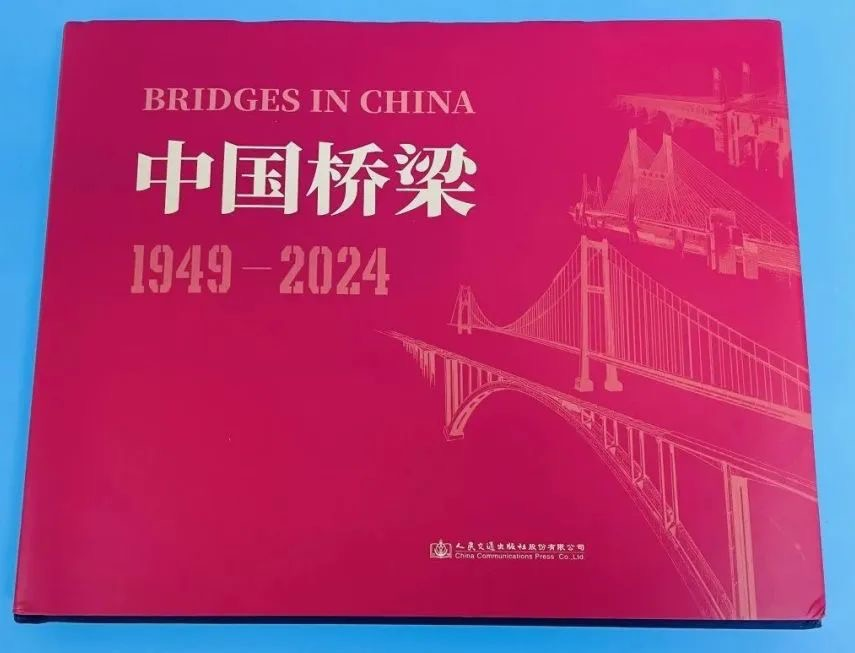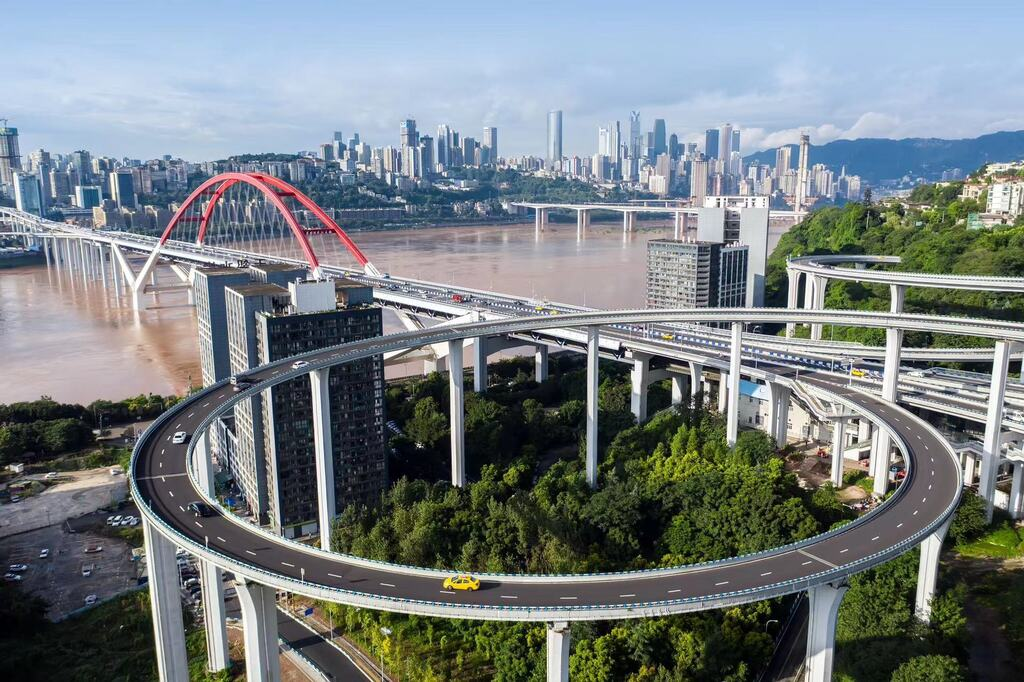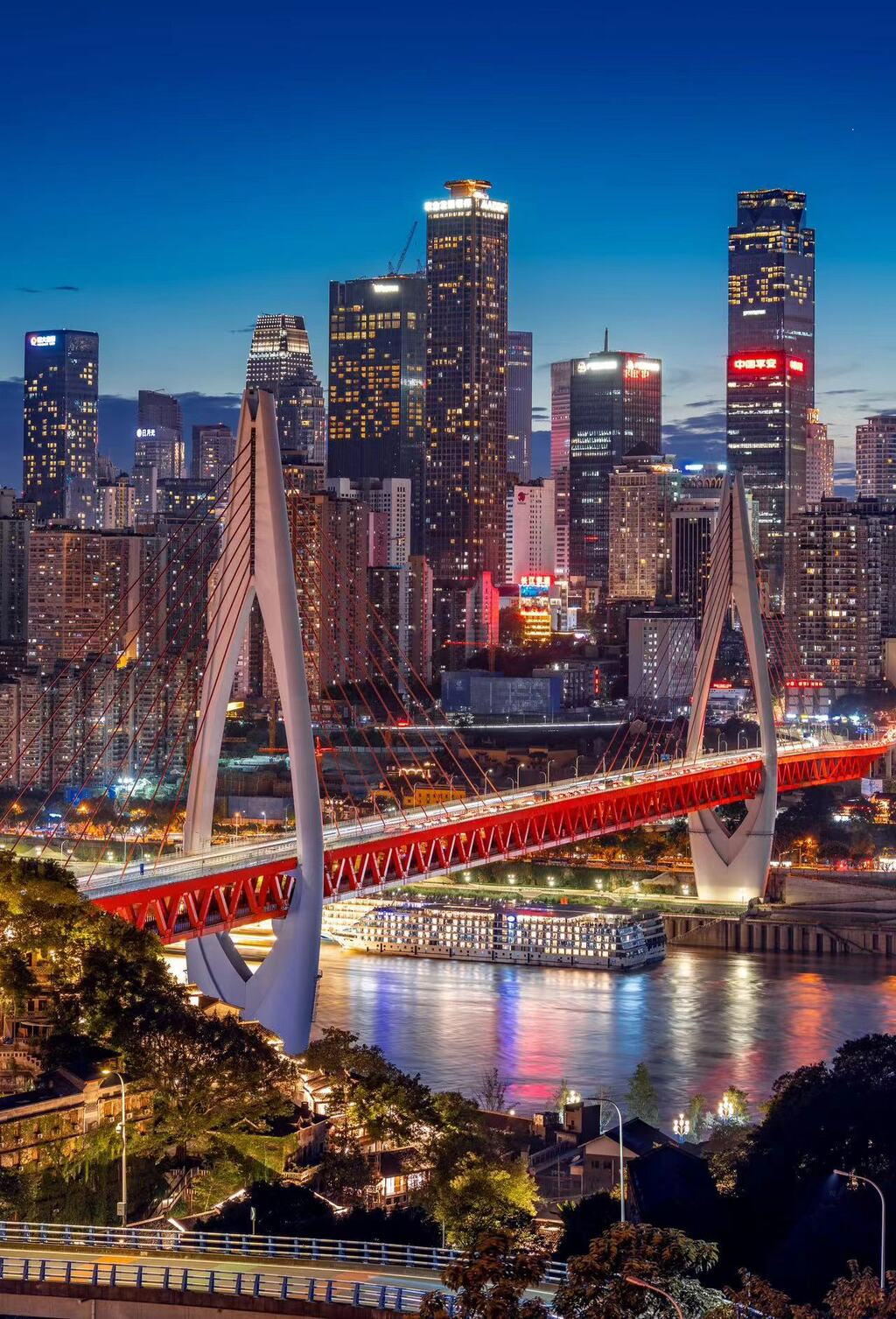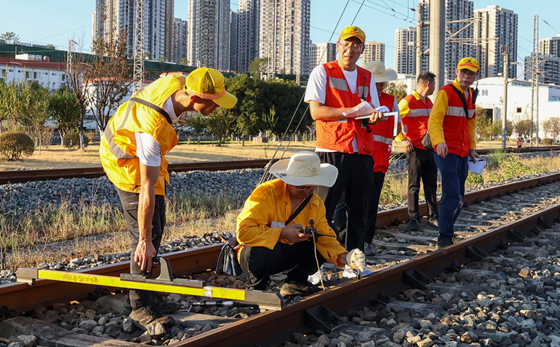Bridges in China 1949–2024 published: Five bridges designed by T. Y. Lin International included
2024-09-06 15:06:03

CHONGQING (CQNEWS) -- Bridges in China 1949–2024 was published by the China Communications Press Co., Ltd. a few days ago. This pictorial book has selected 75 bridges from various developmental periods of construction of bridges in China. Among them, five bridges designed by T. Y. Lin International (China) have been included: Chongqing Shibanpo Yangtze River Bridge Parallel Bridge, Chongqing Caiyuanba Yangtze River Bridge, Chongqing Dongshuimen Yangtze River Bridge, Chongqing Egongyan Rail Transit Bridge, and Macao Bridge.
It is learned that out of the 75 bridges, 14 bridges were built during the period of learning and exploration from 1949 to 1979; 13 bridges were built during the period of tracking and independence from 1980 to 1999; 15 bridges were built during the period of development and working hard from 2000 to 2009, including the Chongqing Shibanpo Yangtze River Bridge Parallel Bridge and Caiyuanba Yangtze River Bridge; 19 bridges were built during the period of innovation and improvement from 2010 to 2019, including the Dongshuimen Yangtze River Bridge and Chongqing Egongyan Rail Transit Bridge; and 14 bridges were built during the period of climbing and surpassing from 2020 to 2024, including the Macao Bridge.
These 75 bridges are not only representative works of different periods of construction of bridges in China, but also symbols of the Chinese people's struggling spirit "Where there is a mountain, we carve a path; where there is water, we build a bridge."
More news 》》
Chongqing Shibanpo Yangtze River Bridge Parallel Bridge
Chongqing Shibanpo Yangtze River Bridge Parallel Bridge, located upstream of the original bridge, is a major urban arterial bridge. The bridge, 1.104 kilometers long, 19 meters wide, has four lanes in one direction. The parallel bridge is a steel-concrete composite continuous rigid frame, making it a bridge with the largest span in the world.

Chongqing Caiyuanba Yangtze River Bridge
Chongqing Caiyuanba Yangtze River Bridge is a pathway crossing rivers connecting Yuzhong District with Nan'an District, spanning a total length of 7 kilometers. The main bridge adopts a double-deck design: the upper deck has six lanes and pedestrian sidewalks on both sides, while the lower deck has dual-track urban rail lines. It is the first bridge combining rigid frame and tied-arch structure.

Chongqing Dongshuimen Yangtze River Bridge
Located at the confluence of the Jialing River and Yangtze River, Chongqing Dongshuimen Yangtze River Bridge connects Yuzhong District with Nan’an District, spanning 1.125 kilometers. The main bridge features a double-deck design, with a four-lane urban expressway on the upper deck and dual-track urban rail transit on the lower deck.
Chongqing Egongyan Rail Transit Bridge
Chongqing Egongyan Rail Transit Bridge, located in Jiulongpo District, Chongqing, cross the Yangtze River, and stretches from Nan’an District in the south to Jiulongpo District in the north, with a total length of 1.65 kilometers. The main bridge is a five-span self-anchored suspension bridge with continuous steel box girder, double towers, and double cable planes, spanning 600 meters, making it the longest self-anchored suspension bridge in the world.
Macao Bridge
Macao Bridge starts from the east side of Reclamation Area A of New Urban Zone in Macao and connects with the Hong Kong-Zhuhai-Macao Bridge’s artificial island port, crossing the Outer Harbour Channel and Inner Harbour Channel to link with Reclamation Area E of the New Urban Zone in Macao, 3.085 kilometers long. (Translated by Jane, Fathom Language Limited)
Editor:江夷玮

 手机阅读分享话题
手机阅读分享话题